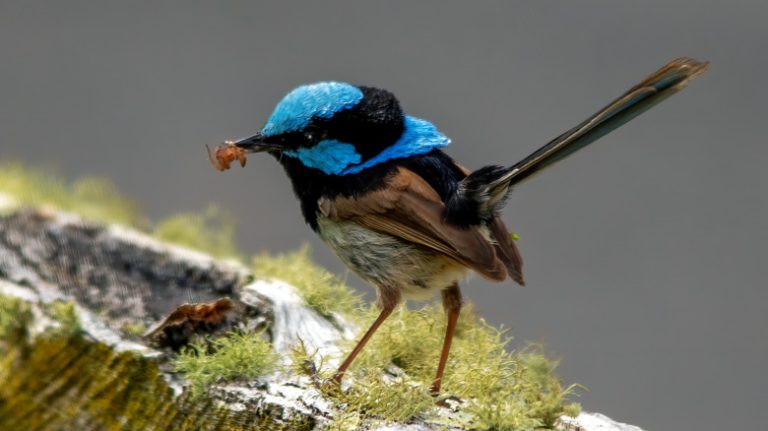If you’re looking to put new life into your Japanese maple tree, fertilizing it properly is key. Fertilizing can help to fill in their nutrient needs and promote healthy growth. However, using the wrong type of fertilizer or applying too much can actually harm your tree and cause its health to deteriorate.
When it comes to fertilizing Japanese maples, there is no one-size-fits-all approach. The type of fertilizer and how and when you apply it will depend on the species of tree, the health of your tree, and where you live. It’s best to do some research or get advice from professionals to ensure you choose the right fertilizer for your Japanese maple.
One of the most important considerations when it comes to Japanese maple fertilization is the nutrient ratio. Slow-release fertilizers are often recommended because they deliver nutrients to your tree over a longer period of time. This can be especially beneficial if you have a busy schedule or simply want to reduce the frequency of feeding. A slow-release fertilizer with a balanced nutrient ratio, such as a 10-10-10 or 14-14-14, can work well for Japanese maples.
It’s important not to over-feed your Japanese maple, as this can cause excessive foliage growth and weaken the tree. Instead, feed your tree just enough to keep it healthy and thriving. A general rule of thumb is to apply about half an inch of slow-release fertilizer around the base of the tree, avoiding direct contact with the trunk. Make sure to water the area well after feeding to help the nutrients penetrate the soil.
Another factor to consider is the timing of fertilizing. Japanese maples benefit from feeding in early spring, just as they start to break dormancy. March is typically a good time to begin fertilizing. However, be aware that fertilizing too late in the growing season can encourage new growth that may not have enough time to harden off before winter, making the tree more susceptible to cold damage.
If you’re not sure what type of fertilizer to use or how to properly feed your Japanese maple, there are many online resources available to help. Websites like MrMaple.com provide specific recommendations for different species and can guide you in the proper use of fertilizers. Additionally, you can consult with local gardening experts or arborists who can provide personalized advice based on your specific tree and location.
Remember, when it comes to fertilizing Japanese maples, it’s important to do your research and follow proper techniques to ensure the healthiest and most attractive tree. Taking a little time to care for your tree can go a long way in helping it thrive for years to come.
Japanese Maples Online
When it comes to caring for Japanese maples, using the right fertilizer is key. These beautiful trees thrive when provided with the proper nutrients. Japanese maples are very popular, and for good reason. Their vibrant foliage and attractive branch structure make them a stunning addition to any garden or landscape.
So, what type of fertilizer should you use for your Japanese maple? The answer depends on the type of tree you have planted. There are many different types of Japanese maple trees, each with its own specific needs. Some trees prefer a balanced fertilizer, while others may require a higher nitrogen or phosphorus ratio. It’s important to know what type of tree you have so you can choose the right fertilizer.
When should you start fertilizing your Japanese maple? The best time to fertilize is in early spring, before the tree becomes active. This will provide the tree with the nutrients it needs to start growing and promote healthy foliage. It’s also a good idea to fertilize again in late spring or early summer to give the tree an extra boost.
So, how much fertilizer should you use? It’s important not to overdo it, as too much fertilizer can burn the roots and cause damage to the tree. A general rule of thumb is to use about half the amount recommended on the fertilizer packaging. Slow-release fertilizers are a good option because they provide a steady supply of nutrients over time.
When fertilizing your Japanese maple, it’s important to work the fertilizer into the soil around the tree. Dig several small holes around the base of the tree and pour the fertilizer into the holes. Fill the holes with soil and water thoroughly. This will ensure that the nutrients reach the roots of the tree.
Japanese maples are relatively low-maintenance, but they do require regular fertilizing to keep them healthy and growing. The right fertilizer can help provide the necessary nutrients for the tree to thrive.
If you’re unsure about what type of fertilizer to use for your Japanese maple, a quick google search or a visit to a local nursery can help provide guidance. They can tell you what specific nutrient needs your tree has and recommend the best fertilizer for it.
In summary, Japanese maples are beautiful trees that require regular fertilizing to keep them healthy and looking their best. The specific type and amount of fertilizer will depend on the species of tree you have planted. Slow-release fertilizers are recommended, and it’s important not to overdo it. Fertilize in early spring and again in late spring or early summer to promote healthy growth. Work the fertilizer into the soil around the tree to ensure the roots can absorb the nutrients.
With the right care and attention, your Japanese maple tree will thrive and bring beauty to your garden for years to come.
Fertilizer For Japanese Maple
When it comes to fertilizing Japanese maples, choosing the right type of fertilizer is crucial for promoting healthy growth and vibrant foliage. Here are some tips on how to fertilize your Japanese maple trees:
1. Know What Your Maple Tree Needs
Before you start fertilizing your Japanese maples, it’s important to know their nutrient needs. Japanese maples generally require a slow-release fertilizer with a balanced ratio of nitrogen (N), phosphorus (P), and potassium (K). The recommended ratio is usually around 10-10-10 or 14-14-14.
2. When to Fertilize
The best time to fertilize Japanese maples is in early spring, right before new growth starts. You can also fertilize them again in late spring or early summer to provide an additional nutrient boost. Avoid fertilizing in late summer or fall, as it can stimulate new growth that may not harden off before winter.
3. Fill in Nutrient Holes
If you notice your Japanese maple tree looking weak or showing signs of nutrient deficiency, you can fill in nutrient holes by using a liquid fertilizer. This method can help provide a quick nutrient boost to support the tree’s health.
4. Use Slow-Release Fertilizers
Slow-release fertilizers are best for Japanese maples because they provide a continuous nutrient supply over an extended period of time. This allows the tree to absorb nutrients at a slower pace, preventing excessive growth spurts that can weaken the tree.
5. Avoid Excessive Fertilizing
While it may be tempting to give your Japanese maples more fertilizer, excessive fertilizing can do more harm than good. Too much fertilizer can burn the roots, leach into the surrounding soil, and even kill the tree. Follow the instructions on the fertilizer package and use it sparingly.
6. Follow Proper Fertilizing Techniques
When fertilizing Japanese maples, it’s important to follow proper techniques to ensure the best results. Start by digging small holes around the tree’s drip line and evenly distribute the fertilizer. After applying the fertilizer, gently water the area to help the nutrients penetrate the soil.
7. Consider Organic Fertilizers
If you prefer a more natural approach, organic fertilizers can also be used for Japanese maples. These fertilizers are derived from natural sources and provide slow-release nutrients that are gentle on the tree. Organic options include compost, fish emulsion, and bone meal.
By following these tips and choosing the right fertilizer, you can help your Japanese maple trees thrive and maintain their vibrant foliage throughout the growing season.
When Do I Fertilize My Japanese Maples
Japanese maples are beautiful and delicate trees that can greatly enhance the beauty of any garden or landscape. To ensure that your Japanese maples thrive and maintain their health and attractive appearance, proper fertilization is essential. Understanding the best time to fertilize your Japanese maples is crucial for their overall well-being.
Most Japanese maples should be fertilized in early spring, just as they are beginning to show signs of new growth. This is the time when the tree will utilize the nutrients from the fertilizer most effectively, helping it to establish strong roots and support healthy foliage. Fertilizing too early, before the tree has fully awoken from its winter dormancy, can cause slow-release fertilizers to leach into the ground before the plant can absorb them.
When selecting a fertilizer for your Japanese maple, it is important to choose one that is specifically formulated for acid-loving plants. These fertilizers are typically high in nitrogen, which is essential for promoting healthy leaf growth. Additionally, they often contain higher amounts of potassium and trace nutrients that Japanese maples need to thrive.
Types of Fertilizers for Japanese Maples
There are various types of fertilizers available for Japanese maples, including liquid fertilizers, granular fertilizers, and slow-release fertilizers. Liquid fertilizers are mixed with water and applied directly to the soil or sprayed onto the foliage. Granular fertilizers are dry pellets that are sprinkled onto the soil and watered in. Slow-release fertilizers are typically in the form of spikes or pellets that are inserted into the ground near the tree’s root zone.
Slow-release fertilizers are usually recommended for Japanese maples because they provide a slow and steady release of nutrients over an extended period of time. This allows the tree to be continuously fed and eliminates the risk of over-fertilization. Before using any fertilizer, it is important to carefully read and follow the instructions provided by the manufacturer.
Fertilizing Japanese Maples: Dos and Don’ts
When fertilizing your Japanese maples, there are a few important things to keep in mind:
- Do fertilize in early spring when the tree is actively growing.
- Do use a fertilizer specifically formulated for acid-loving plants.
- Do follow the recommended dosage and application instructions.
- Don’t over-fertilize, as this can cause the tree to become weakened and more susceptible to disease and pests.
- Don’t fertilize too late in the season, as this can stimulate new growth that may not have time to harden off before winter.
- Don’t apply fertilizer directly to the trunk or leaves of the tree, as this can burn the delicate tissues.
If you are unsure about when or how to fertilize your Japanese maples, it is always best to consult with a local garden center or arborist. They can provide specific advice based on your tree’s species, growing habits, and nutrient needs. Additionally, you can also find helpful information online or through gardening forums and communities.
By providing the right type and amount of fertilizer, you can help your Japanese maples grow and flourish for many years to come.




